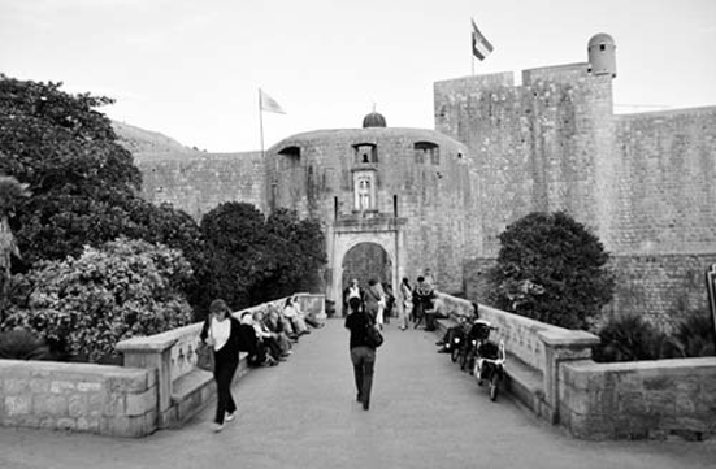Travel Reference
In-Depth Information
Inside the first part of the gate, dead ahead you'll see another image of Blaise. Down the
ramp to your left, look for the white
map
(next to the tourist map) that shows where each
bomb dropped on the Old Town during the siege. Once inside town, you'll see virtually no
signs of the war—a testament to the townspeople's impressive resilience in rebuilding so
well and so quickly.
Passing the rest of the way through the gate, you'll find a lively little square surrounded
bylandmarks.Thegiant,roundstructureinthemiddleofthesquareis
Onofrio's Big Foun-
tain
(Velika Onofrijea Fontana). In the Middle Ages, Dubrovnik had a complicated aque-
duct system that brought water from the mountains seven miles away. The water ended up
here, at the town's biggest fountain, before continuing through the city. This plentiful sup-
ply of water, large reserves of salt (a key source of Dubrovnik's wealth, from the town of
described later) made little, independent Dubrovnik very siege-resistant.

